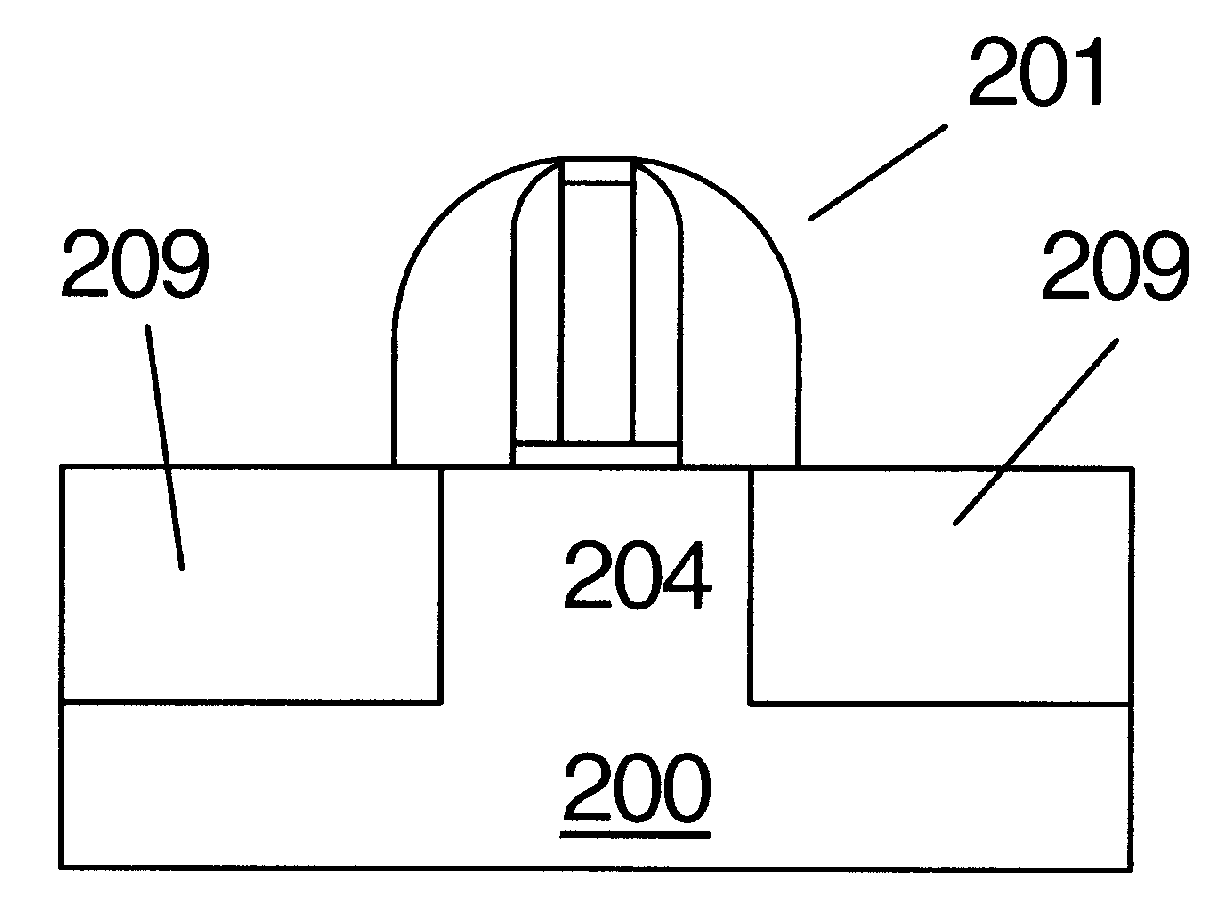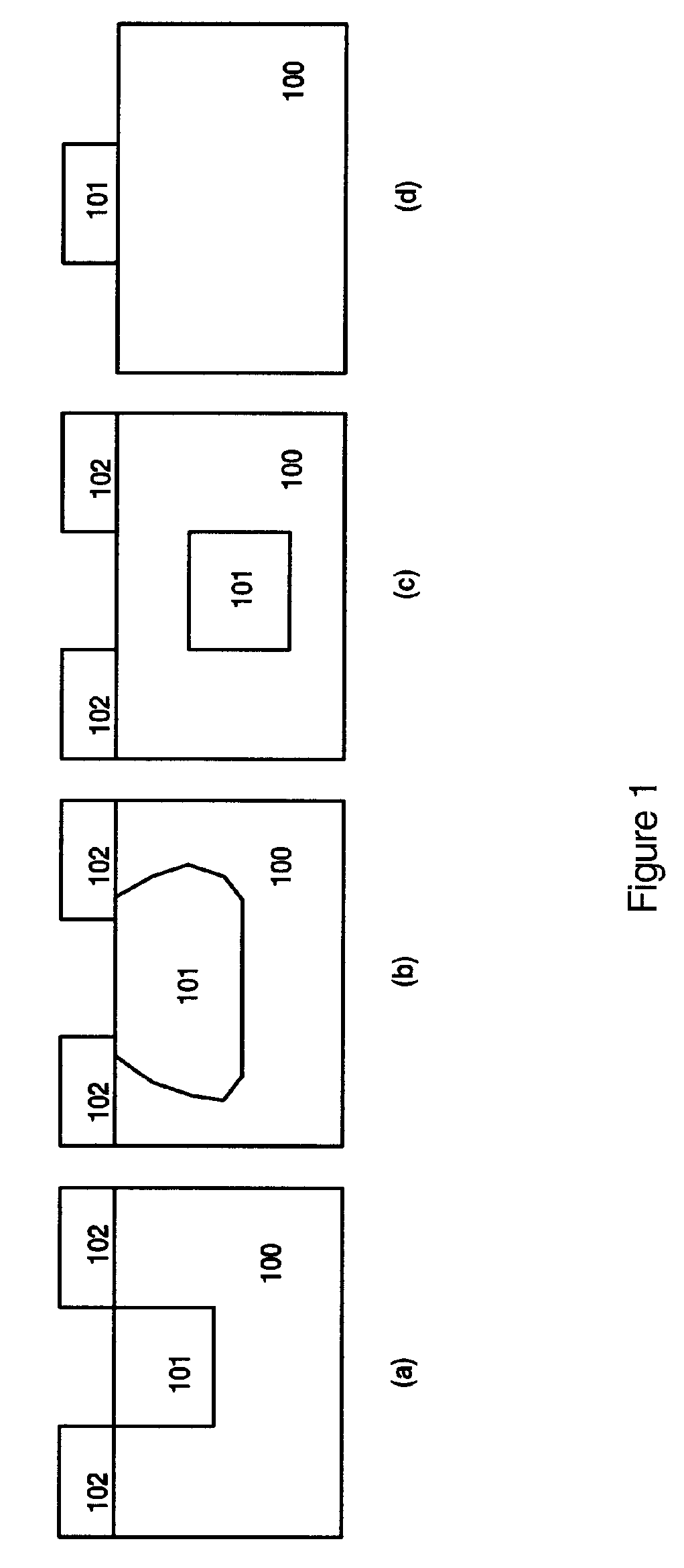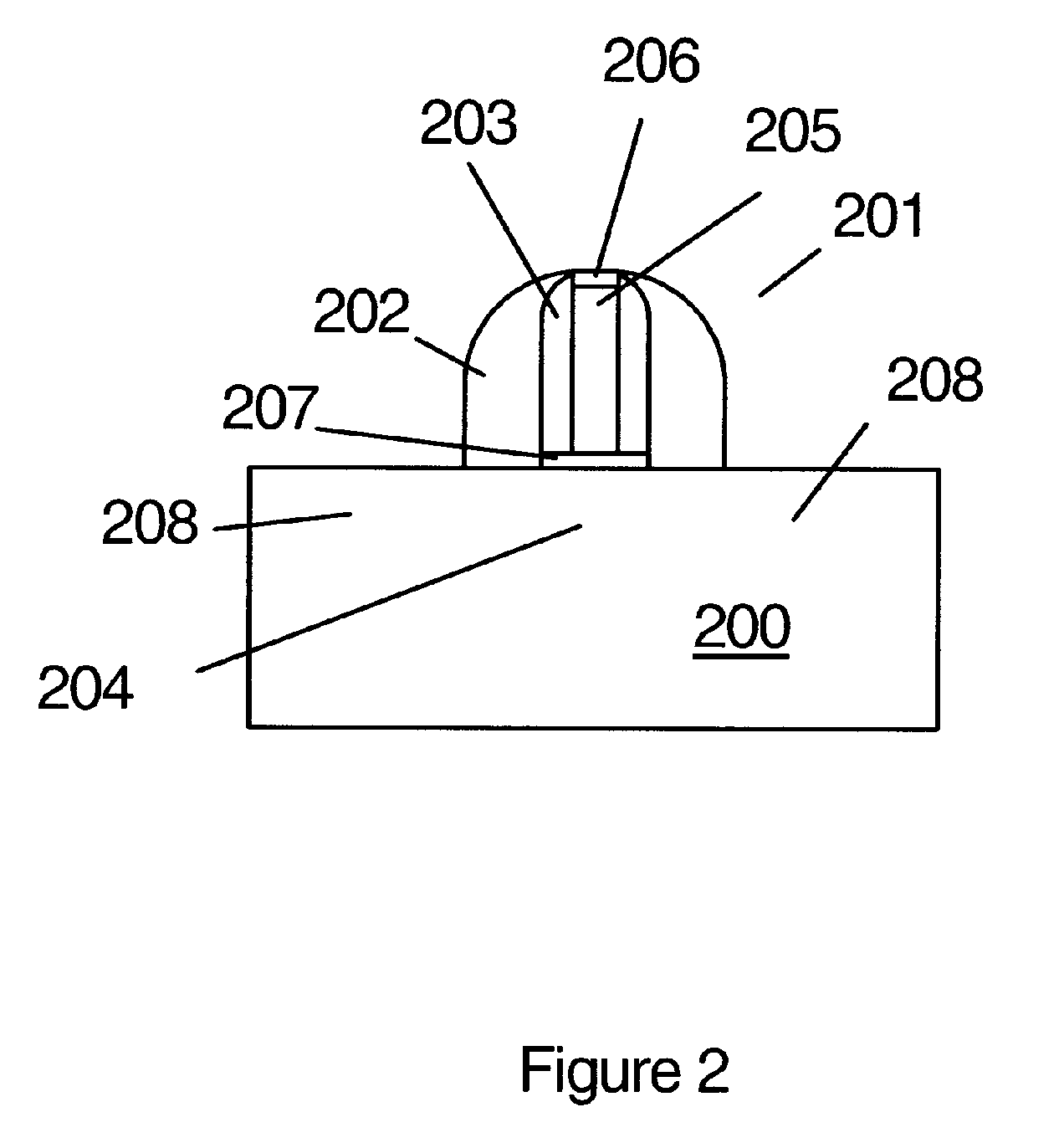Epitaxy of Silicon-Carbon Substitutional Solid Solutions by Ultra-Fast Annealing of Amorphous Material
a technology of silicon carbon and substitutional solid solutions, applied in the direction of basic electric elements, electrical apparatus, semiconductor devices, etc., can solve the problems of difficult sc3 growth, difficult sc3 production, and difficult use of these techniques to form sc3
- Summary
- Abstract
- Description
- Claims
- Application Information
AI Technical Summary
Benefits of technology
Problems solved by technology
Method used
Image
Examples
Embodiment Construction
[0020] The invention is characterized in part by the use of ultra-fast annealing techniques to convert an amorphous silicon and carbon-containing material to SC3S. The ultra-fast anneal is preferably such that the amorphous material is quickly heated to a high temperature at which the recrystallization process occurs rapidly. The temperature is preferably at or more preferably well above the recrystallization temperature, but below the melting point of the material, only for a relatively short period of time. In preferred embodiments, the invention is further characterized by the creation of amorphous silicon- and carbon-containing material regions using (i) amorphization of a silicon-containing material on or in the substrate by implantation, followed by or preceded by (ii) implantation of carbon atoms into the amorphous region. These methods enable the obtaining of SC3S structures with high substitutional carbon concentration in a simple process at high anneal temperatures. The in...
PUM
 Login to View More
Login to View More Abstract
Description
Claims
Application Information
 Login to View More
Login to View More - R&D
- Intellectual Property
- Life Sciences
- Materials
- Tech Scout
- Unparalleled Data Quality
- Higher Quality Content
- 60% Fewer Hallucinations
Browse by: Latest US Patents, China's latest patents, Technical Efficacy Thesaurus, Application Domain, Technology Topic, Popular Technical Reports.
© 2025 PatSnap. All rights reserved.Legal|Privacy policy|Modern Slavery Act Transparency Statement|Sitemap|About US| Contact US: help@patsnap.com



